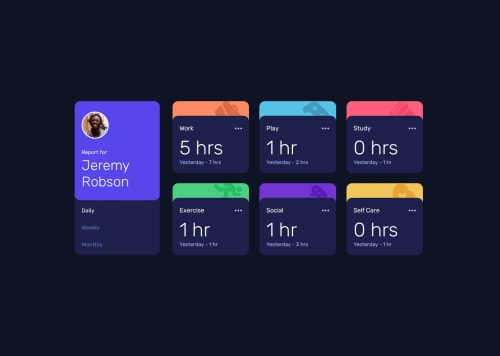Responsive Time Tracking Dashboard

Solution retrospective
Between mobile, tablet, and desktop viewports, there was a lot of repositioning and resizing, so figuring all of that out to make this as responsive as possible felt good.
What challenges did you encounter, and how did you overcome them?The fetch was something I haven't done very much of so working through that and adding the information to the page from the json based on what was clicked was a bit challenging but I just messed around with it and scoured stackoverflow until I was able to put together a working solution.
Please log in to post a comment
Log in with GitHubCommunity feedback
- @Shakil-a
Good job on the solution Joshua!,
The only thing I would say is rather than creating the cards each time you click the timeframes and then displaying it, you could possibly have the cards premade in the html and then grab the title, previous time and current time and then just change those based on which timeframe the user picked.
Marked as helpful
Join our Discord community
Join thousands of Frontend Mentor community members taking the challenges, sharing resources, helping each other, and chatting about all things front-end!
Join our Discord